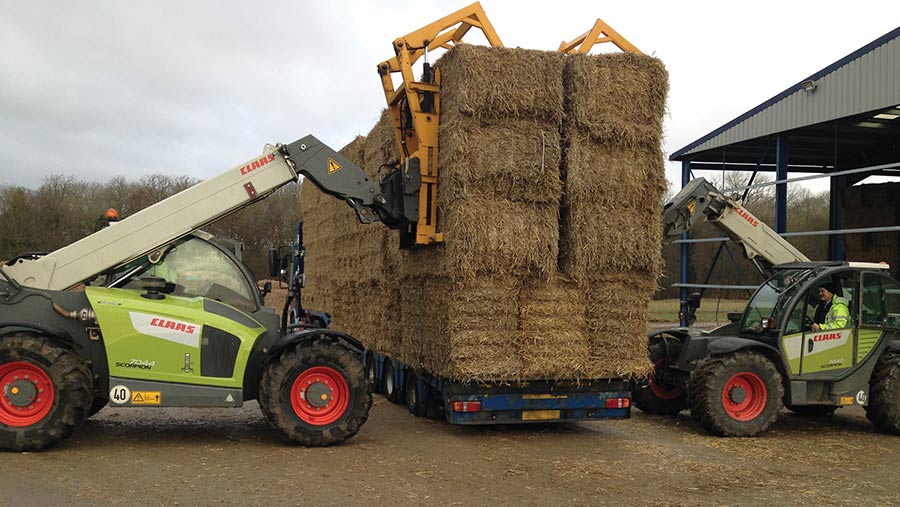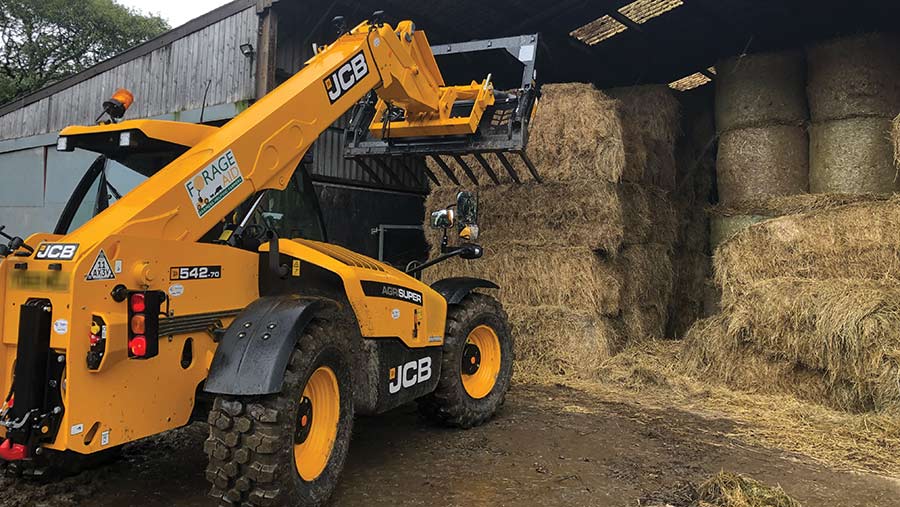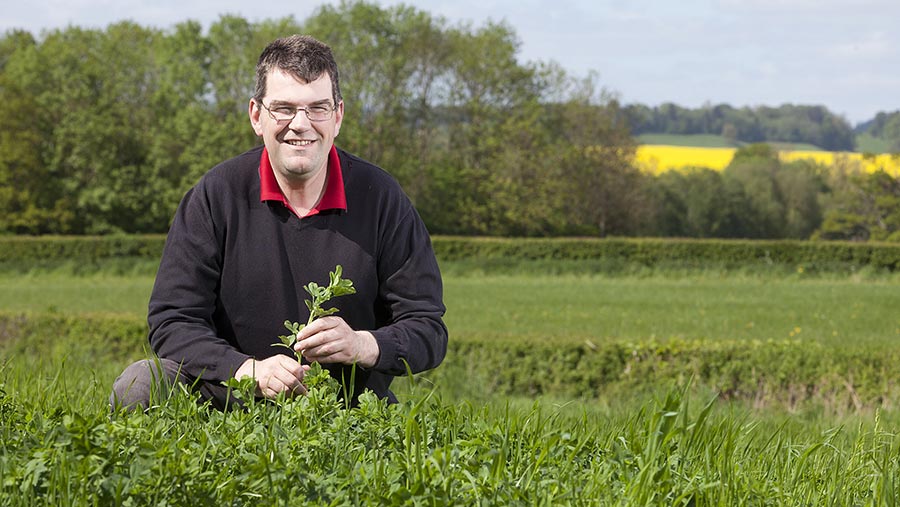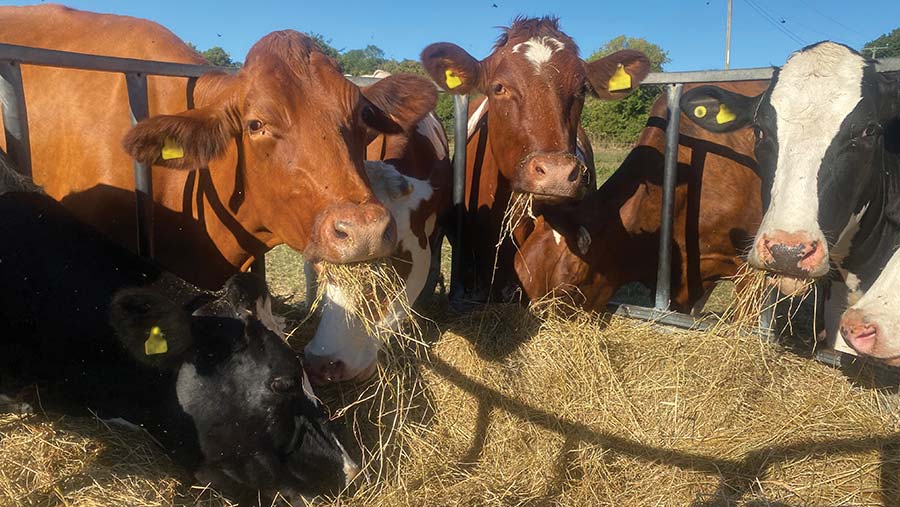Forage Aid gears up for busy winter feed campaign
 © Forage Aid
© Forage Aid The prolonged hot weather and lack of rain has created serious issues for livestock farmers, with increasing reports of forage shortages.
Following massive increases in feed, fertiliser, fuel and energy prices, and with further rises expected, the looming forage crisis is compounding the financial difficulties many farms already face.
Since July, farmers have been breaking into stocks of first-cut silage, which is likely to contribute to shortages later in the season, especially beyond Christmas and into next spring.
The dire situation has left many farmers worried they will run out of feed for their animals over the winter.
Forage Aid, which co-ordinates the distribution of emergency forage and bedding to farms in need, is bracing itself for a busy winter.
We find out more about the charity and hear from farmers who have been helped by the group.
See also: Editor’s view: We need a better plan for water security
How it started
Lincolnshire arable farmer Andrew Ward set up the initiative in 2013 after he helped sheep farmers in Cumbria and Wales in the snowdrifts by supplying forage to stricken farms.
After the Somerset floods in late 2014, Mr Ward and Somerset beef and arable farmer James Winslade decided to formalise the process and apply for charitable status.
This was granted in April 2015. Since then, Forage Aid has been called into action many times.
Reflecting on the current drought, Mr Ward says: “The situation is very variable, depending on what part of the country you are in.
Some areas, such as Cumbria and Scotland, have had ample rain and have enough grass; others have not.
“It’s the areas that have not which are our concern. They are already feeding their winter feed to their livestock.”

© Forage Aid
The charity says it has not yet received calls from farmers experiencing immediate forage shortages, as it is too early in the season and any significant rain now could improve the situation.
But it is anticipating a flurry of calls around Christmas, depending on the weather between now and then.
“The weather is the one thing that is out of the farmer’s control, but it usually affects how everything operates,” Mr Ward explains.
“If farmers get adequate moisture, they might be able to get another cut of silage before winter, but the chances of that are minimal.”
Supporting organisations and businesses
Forage Aid operates purely on the goodwill of the farming community to help fellow farmers in need, with added support from the haulage industry; 99% of its forage donations and deliveries completed since 2014 have been free.
The charity has received great support from main farm machinery manufacturers, including JCB, Bailey Trailers, Case IH, John Deere and Claas, which have all helped with haulage and machinery loans.
Agronomy technical service providers Agrii and Hutchinsons, and fertiliser manufacturer CF Fertilisers, have also been supportive.
Forage Aid is one of three charities in the Farming Help initiative. The other two are the Addington Fund and the Farming Community Network (FCN).
All are supported by the Prince’s Countryside Fund.
“If they get a call from a farmer in distress who needs forage, they hand it to us,” Mr Ward says. “It’s a great collaboration. They help us and we help them.”
Forage Aid is also supported by the National Federation of Young Farmers’ Clubs (NFYFC) and its network of more than 580 clubs in England and Wales.
How the scheme works
Donations of feed, forage and bedding are usually received from areas where supplies are plentiful.
These are then distributed through a network of haulage contractors, provided that the recipient farmer meets strict criteria.
Mr Ward says: “They normally must have a visit from one of our partner charities. They fill out our four-page application form, which includes forage in store already and stocking levels.”
The charity tries to match local hauliers with local produce to minimise carbon footprint and diesel costs. It also tries to match farmers’ expectations to their farming systems.
For instance, if the farmer requests round bales, it will try to deliver.
However, Mr Ward says responding to droughts is always trickier than other extreme weather events, such as flooding.
“A drought is normally far more widespread than a flood. The duration is often a bit different,” he explains.
“Currently, everybody is financially tight and we are in uncharted waters. The cost of haulage and producing silage and hay has rocketed. We won’t know until when we are called into action what we can do.”
Floods help
Mr Winslade, the co-founder of Forage Aid, became the face of the Somerset floods in 2014 when he and his wife Jenny were forced to evacuate 550 cows from their farm in Bridgwater after it became engulfed in floodwaters up to 12ft deep.
“I know exactly what it’s like to be in a crisis,” he says. “We have been called upon almost every year to help since the charity was formed.
“This time, the biggest worry is the price of fuel and haulage, now that large parts of the country are in drought.
“We are only a small charity, and we live from emergency to emergency. We depend on help from the farming community and the public.”
Mr Winslade says local dairy farms are already using their first cut silage to feed cows. Some have not yet done their second cut, and the likelihood of this now is diminishing.
He also knows a local contractor who has been cutting maize crops at just 5ft tall. “They should be 10-12ft tall by now, if not more, and it should be cut in September/October, not August,” he says.
On his own farm, Mr Winslade brought in the cattle in July and is having to give them supplementary feed of silage and hay to help them gain weight. This is because the clover in the grass they were grazing was burnt up and the cattle were not getting the nutrients they needed.
Mr Winslade believes hauliers may have to travel longer distances in the forthcoming crisis, which will add to costs.
He urges people to offer their support through cash donations as well as physical donations of hay, straw and silage, both of which can be done through the Forage Aid website.
Forage Aid in numbers |
|||
| Year/weather event | Farmers helped | Loads delivered | Value |
| 2013 – Snow in Cumbria and Wales | 56 | 73 | £155,000 |
| 2014 – Somerset floods | 21 | 200+ | £350,000 |
| 2016 – Cumbria floods | 48 | 115 | £220,000 |
| 2019-20 – Yorkshire and Derbyshire floods | 12 | 35 | £96,000 |
Case study: Beef farmer faces ‘double whammy’ of less forage and fertiliser
Gloucestershire beef farmer Paul Westaway would normally have made four cuts of silage by mid-August, but this year he has managed only two.
“The place is an absolute desert,” he says. “There is no green anywhere and chances of getting a third cut are not looking good.”
A tenant farmer, Mr Westaway reckons he will produce about half his normal quantity of forage this year.

Paul Westaway © Jonathan Page
Like many farmers, he reduced his use of fertiliser this year due to increased costs, so his yields of first- and second-cut grass were down too.
“It’s a real double whammy we didn’t need,” he laments.
To make up the shortfall, he has been feeding his 150 head of pedigree Aberdeen Angus and Murray Greys additional hay since July.
This is on top of a 40% increase in red diesel bills and electricity doubling in cost.
One positive for Mr Westaway is that he is 30-40 head light this year at Melview Farming, in Dymock, a 69ha Gloucester County Council farm which he runs in partnership with his wife Kirsty.
This is because they are waiting to build a new cattle shed, which has now been approved by the council.
“We’re one of the lucky ones, but I’m still worried we will run out of feed,” he says. “Everyone that is at full stocking rate must be worried sick.”
Case study: Cows are ‘flying through silage’, says Welsh dairy farmer
NFU Cymru deputy president and mixed farmer Abi Reader says her cows are “flying through the silage” which was meant to be kept for winter.
The first-cut silage and half of the second cut has already been fed to her herd of 180 Holstein Friesians and Dairy Shorthorns in Glamorganshire, South Wales.
The third-generation dairy farmer would normally fill two silage clamps, each holding four months’ worth of grass silage, to feed the cows during the winter.
The animals also need an additional 1,000 haylage bales.

Abi Reader has already used up a large part of her winter silage © Abi Reader
“We’ve only got 200 bales at the moment as we’ve been feeding the cows everything we’ve got,” she says.
In the eight weeks to mid-August, the farm received just 3mm of rainfall and the paddocks have turned to dustbowls.
The high yielders have been fed on full winter rations for the past four weeks. They are also being fed hay from ring-feeders and trailers taken into fields.
The cows cannot be kept inside as the sheds are not suitable for summer housing.
This week, a Westerwold ryegrass will be drilled into barley and wheat stubble in the hope that the rain will come and the farm may be able to salvage a silage crop this autumn.
“Not all hope is lost yet,” says Ms Reader. “If we can drill this grass, it is going to be very reliant on getting some moisture next week.
“We may well drag ourselves out of a hole. Otherwise, we’ll be in trouble.”
Forage Aid: How to get in touch
Livestock farmers across the UK who have concerns about their feed situations are being encouraged to visit the Forage Aid website to register their details.
This includes filling in a form detailing what type of forage they think they may need and when they may require it.
Farmers who have surplus forage that they can donate, and hauliers who can offer their services, should also register online.
People willing to donate cash via JustGiving, PayPal or BACS payment can do so on the website.
For further details on Forage Aid, call 07967 219991 or email info@forageaid.org.uk. Any farmer who needs support can call Farming Help on 03000 111 999.
